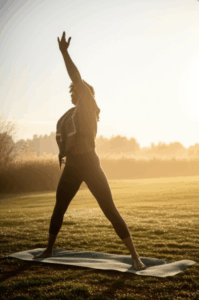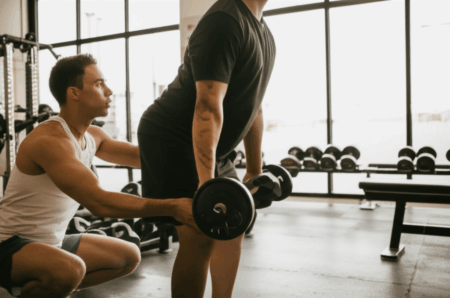Inspired by the radiant health and vitality of figures like Helen Mirren, many women over 50 are seeking ways to maintain their strength, energy, and overall well-being. It’s a time of life that brings unique challenges and opportunities, and with the right approach, staying strong and fit is absolutely achievable. This article explores practical strategies, expert advice, and actionable tips to help women over 50 thrive.
The Shifting Sands: Understanding Changes After 50
Entering your 50s often marks the beginning of significant physiological changes, primarily driven by hormonal shifts associated with perimenopause and menopause. These changes can impact various aspects of health, including:
- Muscle Mass: Sarcopenia, the age-related loss of muscle mass and strength, can accelerate during this period. Strength training becomes crucial to counteract this decline.
- Bone Density: Estrogen plays a vital role in maintaining bone density. As estrogen levels decrease, the risk of osteoporosis increases, making bone-strengthening exercises and adequate calcium intake essential.
- Metabolism: Metabolic rate can slow down, potentially leading to weight gain. A balanced diet and regular physical activity are key to managing weight effectively.
- Stress Levels: Women in the early perimenopausal phase may experience higher stress levels. Managing stress through techniques like meditation, physical activity, and engaging in enjoyable activities becomes crucial for overall well-being.
The Power of Strength Training
Strength training, also known as resistance training, is a cornerstone of staying strong after 50. It offers numerous benefits:
- Combats Muscle Loss: Strength training stimulates muscle protein synthesis, helping to maintain and even increase muscle mass.
- Boosts Bone Density: Weight-bearing exercises put stress on bones, prompting them to become denser and stronger, thus reducing the risk of fractures.
- Enhances Metabolism: Muscle tissue burns more calories than fat tissue, so increasing muscle mass can help boost metabolism and aid in weight management.
- Improves Balance and Coordination: Strength training enhances proprioception, the body’s awareness of its position in space, leading to better balance and coordination, which are crucial for preventing falls.
- Elevates Mood: Physical activity, including strength training, releases endorphins, which have mood-boosting effects and can help reduce anxiety and depression.
Getting Started with Strength Training
It’s essential to approach strength training safely and effectively:
- Consult Your Doctor: Before starting any new exercise program, especially if you have underlying health conditions, consult your doctor.
- Start Slowly: Begin with bodyweight exercises or light weights to master proper form. Gradually increase the weight or resistance as you get stronger.
- Focus on Form: Proper form is crucial to prevent injuries. Consider working with a certified personal trainer who can teach you correct techniques.
- Warm-Up: Always warm up before each workout with light cardio and dynamic stretching.
- Cool Down: Cool down after each workout with static stretching to improve flexibility and reduce muscle soreness.
Sample Strength Training Routine for Women Over 50
Here’s a sample routine that can be performed two to three times per week, with rest days in between:
- Squats: Strengthens hips, legs, and core. Stand with feet shoulder-width apart, lower your body as if sitting in a chair, keeping your back straight. (3 sets of 8-12 repetitions). If using dumbbells, hold weights in front of your chest.
- Push-Ups: Strengthens chest, shoulders, and triceps. Perform push-ups against a wall, on your knees, or on your toes, depending on your fitness level. (3 sets of as many repetitions as possible with good form).
- Dumbbell Rows: Strengthens back muscles. Bend forward at the hips, keeping your back straight, and pull dumbbells towards your chest. (3 sets of 8-12 repetitions per arm).
- Overhead Press: Strengthens shoulders. Stand with feet shoulder-width apart and press dumbbells overhead. (3 sets of 8-12 repetitions).
- Bicep Curls: Strengthens biceps. Stand with feet shoulder-width apart and curl dumbbells towards your shoulders. (3 sets of 10-15 repetitions).
- Tricep Extensions: Strengthens triceps. Hold a dumbbell overhead and lower it behind your head, keeping your elbows close to your ears. (3 sets of 10-15 repetitions).
- Plank: Strengthens core. Hold a plank position, keeping your body in a straight line from head to heels. (Hold for 30-60 seconds, 3 repetitions).
- Glute Bridges: Lie on your back with knees bent and feet flat on the floor. Lift your hips off the ground, squeezing your glutes at the top. (3 sets of 15-20 repetitions).
How to choose your weights:
- Start Light: Begin with a weight that feels easy. Use the first set to warm up and estimate what you will use for the exercise.
- Gradually increase the weight until you can do 8 and 10 repetitions with good form but high effort.
- Check in with yourself: If after you’re done, you could have done more than 2 repetitions in good form, increase the weight. But, if after you’re done, you could NOT have done 2 more repetitions, it may be too heavy. The sweet spot is: if after you’re done, you could have done just 2 more repetitions with good form, you’ve got the right weight for you right now.”
Beyond the Gym: Incorporating Activity into Daily Life
Staying strong isn’t just about hitting the gym. Incorporating physical activity into your daily routine can make a significant difference:
- Walking: Aim for at least 30 minutes of brisk walking most days of the week.
- Gardening: Gardening is a great way to get some exercise and fresh air.
- Dancing: Dancing is a fun and effective way to improve cardiovascular health and coordination.
- Yoga: Yoga improves flexibility, balance, and strength, and it can also help reduce stress.
- Active Hobbies: Choose hobbies that involve physical activity, such as hiking, biking, or swimming.
Nutrition for Strength and Vitality
Nutrition plays a crucial role in supporting strength and overall health after 50. Focus on:
- Protein: Adequate protein intake is essential for maintaining muscle mass. Aim for at least 0.8 grams of protein per kilogram of body weight per day, and possibly more if you are actively strength training. Good sources include lean meats, poultry, fish, eggs, dairy, beans, and tofu.
- Calcium: Calcium is vital for bone health. Women over 50 should aim for 1,200 mg of calcium per day. Good sources include dairy products, leafy green vegetables, and fortified foods. If you don’t get enough calcium through diet, consider supplementation.
- Vitamin D: Vitamin D helps the body absorb calcium. Many adults are vitamin D deficient. Good sources include fatty fish, fortified foods, and sunlight exposure. A supplement may be necessary, especially during winter months.
- Healthy Fats: Include healthy fats in your diet, such as those found in avocados, nuts, seeds, and olive oil.
- Fruits and Vegetables: Eat a variety of colorful fruits and vegetables to obtain essential vitamins, minerals, and antioxidants.
- Limit Processed Foods, Saturated Fats, and Excessive Sodium: Ultra-processed foods and excessive saturated fats should be limited. The DASH diet is characterized by its low sodium content and emphasis on foods rich in calcium, potassium, and magnesium, which are known to help reduce blood pressure. Sodium restrictions vary depending on your personal needs.
- Hydration: Drink plenty of water throughout the day to stay hydrated.
Prioritizing Bone Health
Given the increased risk of osteoporosis after menopause, prioritizing bone health is essential.
- Weight-Bearing Exercises: Engage in weight-bearing exercises like walking, jogging, dancing, and stair climbing to stimulate bone growth.
- Strength Training: As mentioned earlier, strength training is crucial for increasing bone density.
- Calcium and Vitamin D Intake: Ensure adequate intake of calcium and vitamin D through diet and supplementation if necessary.
- Regular Bone Density Screenings: Talk to your doctor about getting regular bone density screenings, especially if you have risk factors for osteoporosis.
Exercises to Support Bone Health:
- Squat
- Seated Jack
- Reverse Lunge
- Deadlift
- Pushup
- Woodchop
- Glute Bridge
- Plank
The Importance of Sleep
All adults need seven to nine hours of quality sleep each day. Women may be particularly vulnerable to insufficient sleep duration and quality after the menopausal transition. To achieve better sleep, follow a regular sleep schedule, and avoid naps late in the day as this may keep you awake at night.
Nurturing Mental and Social Well-being
Staying strong involves more than just physical fitness. Mental and social well-being are equally important:
- Manage Stress: Chronic stress can negatively impact health. Practice stress-reducing techniques such as meditation, yoga, or spending time in nature.
- Stay Socially Connected: Maintain strong relationships with family and friends. Social interaction can boost mood and cognitive function.
- Challenge Your Brain: Engage in mentally stimulating activities such as reading, puzzles, or learning new skills to keep your mind sharp.
- Pursue Hobbies: Engage in activities you enjoy to promote a sense of purpose and fulfillment.
Martha Stewart says that maintaining friendships with people like Snoop Dogg has played a key role in her own successful aging. “When we create a new hobby or try something new, we develop an inverse sense of excitement, motivation, and willingness to try. That is what new types of friendships and interaction are like,” says Reena B. Patel, MA, LEP, BCBA, a licensed educational psychologist
Embracing the Journey
Staying strong after 50 is a journey, not a destination. It requires a holistic approach that encompasses physical activity, nutrition, mental well-being, and social connection. By making small, sustainable changes to your lifestyle, you can maintain your strength, energy, and vitality, and embrace this chapter of life with confidence and grace, just like Helen Mirren. As Dame Helen Mirren urges, “It’s never too late to start doing something, so why not give something a go while you’re younger?”







